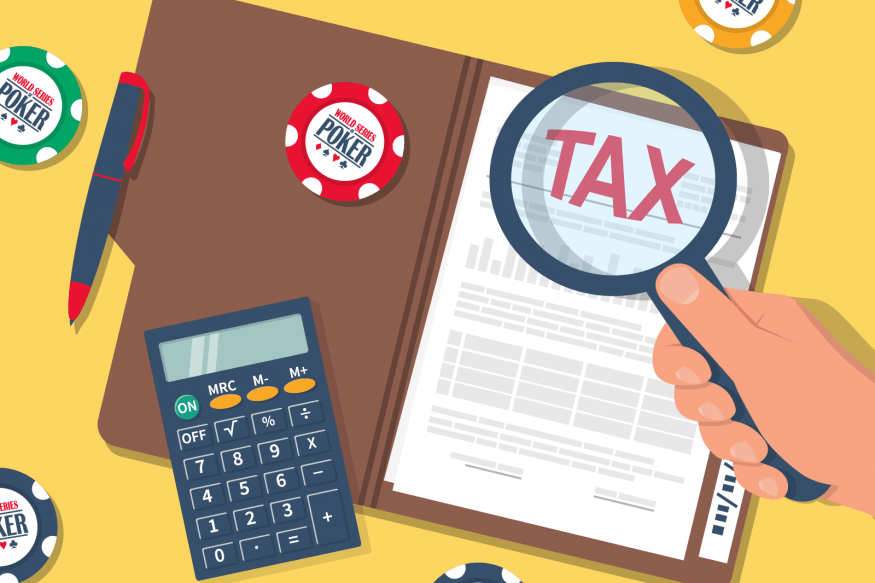WSOP Rake and Taxes: Everything Serious Players Must Know

Understanding the Hidden Costs of Playing the WSOP
Every year, the World Series of Poker captures global attention with high-stakes drama, massive prize pools, and unforgettable victories. While much is celebrated about big wins and legendary stories, less attention is given to the less glamorous-but crucial-topics of rake and taxes. Whether you're a tournament regular or eyeing your first WSOP bracelet, understanding what you actually take home after all deductions is vital.
Both rake-the fee taken by organizers from every tournament buy-in-and varying tax rules by player nationality can have a significant impact on your bottom line. Planning ahead for these expenses could make the difference between a life-changing windfall and a less satisfying payout.
Breaking Down the WSOP Rake: What Players Really Pay
If you're serious about live tournament poker, the concept of rake is unavoidable. Rake is the portion of the buy-in that the event organizers keep to cover costs and profit-compensating for expenses ranging from staff and venue fees, to dealers, cards, and chips.
The World Series of Poker, as the world’s biggest live poker series, applies its own structured rake rates that directly impact the return on your buy-in. Crucially, the percentage you pay in rake actually decreases as you play higher-buy-in events.
Here's an overview of typical WSOP rake rates based on buy-in level:
| Buy-In Level | Typical Rake Percentage | Example Fee Structure |
|---|---|---|
| $1,000 - $3,000 | 10% | Mini Main Event: $1,000 buy-in × 5,521 entries = $552,100 in rake |
| $5,000 | 7% | Bigger share of buy-in goes to the prize pool |
| $10,000 Championship | 6% | Most of the money is retained in the prize pool |
| $25,000+ High Roller Events | 5% | Lowest rake for the highest buy-ins |
With the exception of special charity events (such as the One Drop), where a segment of the buy-in supports the charity, players pay between 5-10% of their entry to the house. The higher the buy-in, the lower the percentage-making high stakes tournaments more cost-effective relative to the total prize pool.
The Ongoing Debate: Should Players Get Some Rake Back?
Over recent years, many in the poker community have questioned whether the WSOP should continue charging rake or consider introducing a rebate or loyalty program for players. Some argue that the scale of the WSOP now resembles other major sporting events, where athletes may receive appearance fees or other incentives, rather than being charged to participate.
Despite the merits of these discussions, currently there’s little indication that significant change will happen soon. Any move to eliminate or lower rake would likely require increased sponsorship and broadcasting deals, as is typical with mainstream sports. As the poker landscape evolves, this is a debate that is unlikely to disappear.
Taxation on WSOP Winnings: How Much Do Winners Actually Keep?

There’s an old saying: Only two things in life are certain-death and taxes. But in major poker tournaments like the WSOP, it’s actually the combination of both rake and taxes that cut into potential winnings.
While tournament prize pools can be life-changing, the final payout is often quite a bit less after taxes. Consider the 2014 WSOP Main Event:
- Felix Stephenson (Norway): Runner-up took home $5.1 million but, due to Norway’s strict tax regime and his status as a professional gambler, had to pay over 50% in taxes.
- Martin Jacobson (Sweden, UK resident): As the champion, Jacobson’s $10 million win was tax-free-because the UK does not tax poker winnings, and he was a UK resident at the time.
This stark contrast shows just how much tax laws and residency have an impact on what winners retain.
How WSOP Taxes Are Applied: U.S. and International Players
The amount of tax withheld on WSOP winnings depends primarily on the player’s country of residence and the local tax relationship with the United States. Here’s how it breaks down for most players:
- U.S. residents: 24% federal tax is automatically withheld on winnings exceeding $5,000. Players must subsequently report and pay any applicable state taxes separately.
- Citizens from countries with a tax treaty with the U.S.: Receive their winnings in full, but are responsible for taxes in their own country (ranging from 0% to over 50%).
- All other international players: 30% is withheld by the WSOP on any winnings over $5,000, on the spot, with no exceptions unless specific treaty provisions apply.
Only a small selection of countries, such as the United Kingdom, Canada (non-professional players only), and Luxembourg, have both favorable gambling tax policies and tax treaties with the U.S., putting their residents in a uniquely advantageous position.
Can Relocating Lower Your WSOP Tax Bill?
Once you’ve won at the WSOP, unfortunately, relocating afterward won’t help you avoid taxes on that particular payday. Your tax liability is determined by where you reside at the time of your victory, not where you move to later.
This makes advance planning key, especially for full-time professional players. Your place of residence and the local tax regulations can dramatically affect your long-term profitability in poker.
For the poker player aiming to make a living-who grinds WSOP events year after year-the cumulative hit from both rake and taxes can be enormous. At a certain point, high tax and fee burdens may make the numbers impossible to beat over the long term.
For casual players, the issue is less pressing, since any WSOP win is an unexpected windfall similar to a lottery jackpot, even if taxes do take a bite.
Some professionals, however, choose to relocate to more tax-friendly jurisdictions. If you’re considering making poker a lasting career, investigating residency and its tax implications should be a top priority.
Is Playing the WSOP Worth It After Rake and Tax?
After accounting for tournament rake, taxes, and associated travel expenses, many wonder if WSOP tournaments still offer sufficient value.
For players from countries with low or no taxes on gambling winnings-especially those protected by a U.S. tax treaty-the numbers can still make sense. WSOP tournaments are typically soft relative to buy-in levels, providing good opportunities for skilled players.
Recreational players, on the other hand, are rarely deterred by tax concerns. The real value is in experiencing the event, having fun, and hopefully cashing for a profit-tax hit or not.
Professional poker players, however, need to crunch the numbers carefully. If you can’t legally lower your tax burden, the true cost of playing could make or break your career. An experienced accountant familiar with international gambling law can be invaluable in these cases.
Key Takeaways: Planning for Expenses at the WSOP
Every country has unique and sometimes complex gambling tax regulations. Before hitting the felt at the World Series of Poker, make sure to:
- Understand how much of your buy-in goes to rake for each event.
- Research your home country’s tax obligations on gambling or poker winnings.
- Consider the impact of residency and explore options if you’re pursuing poker professionally.
- Factor in additional expenses-travel, lodging, and living costs in Las Vegas.
The better your understanding and planning, the more likely you are to maximize your potential take-home-the real prize behind the big win. Seek out expert advice, talk to your peers, and approach the WSOP with eyes wide open about all potential deductions. Proper preparation can mean the difference between a dream payout and unexpected disappointment.













